Design Your Personal Healthy Food Guide
In today’s world, the internet is littered with new diet fads and meal plans that promise quick fixes and rapid weight loss. While these “diets” can produce short term results, they fail to take into account individual preferences, food intolerances and allergies and therefore are less sustainable over the long-run. I believe that the need for dieting can be avoided by developing better awareness of different food groups, which will allow you to build your own personal “healthy” food guide. Eating healthy doesn’t have to be a chore, and the choices within each food group are nearly endless! The best recommendation is to pick foods you like from each different group and to build balanced meals around these foods. This way, you can still include some of your favourite sweet treats in moderation too. After all, you need to live a little and pizza is life!
The Purpose Of The Food Guide
Below, I’m going to share a food guide that I put together for a client based on their intolerances and individual preferences. The purpose of the food guide is to allow for flexible eating, personal preference and long-term adherence. Unlike strict diets and rigid meals plans, the food guide doesn’t tell you what you must eat at any given time, but gives you flexible options within each food category to choose from. It gives you autonomy and control over your food decisions, and allows for moderate indulgence as long as 80-90% of your intake is derived from “healthy” options. When you read the example of one of my client’s food guides below, you’ll notice it strongly facilitates autonomous control. This is fundamentally important, as “giving people the tools and knowledge to self-actualise along their journey substantially increases their chances of long-term adherence.” (1., p.242).
Discovery Session
Before putting together your personal food guide, you need to ask yourself (or have a health care professional ask you) some questions about your food preferences and eating behaviours. Use the answers to complete your food guide, which will help you better understand how you can follow a balanced diet that you enjoy and can adhere to on a consistent basis. below are some questions I asked my client before we put together his food guide:
Food Preferences & Intolerances
- Do you have any allergies/food intolerances that you know of?
- Do any foods cause you to feel bloated/lethargic?
- What meat/fish sources do you dislike?
- What fruits do you dislike?
- What vegetables do you dislike eating?
What carbs do you dislike?
Below, are the topline answers from our discovery session.
- Intolerances: yeast, wheat, eggs, cow dairy & gluten
- Dislikes: seafood and fishy fish (salmon)
- Flexible about protein/meat sources
- Flexible about vegetable choices
- Flexible about fruit choices
Flexible with carbs, but need to moderate some due to intolerances (e.g., pasta & bread)
Based on the above information from our discovery session, I put together the below food guide for my client.
Client X’s Food Guide

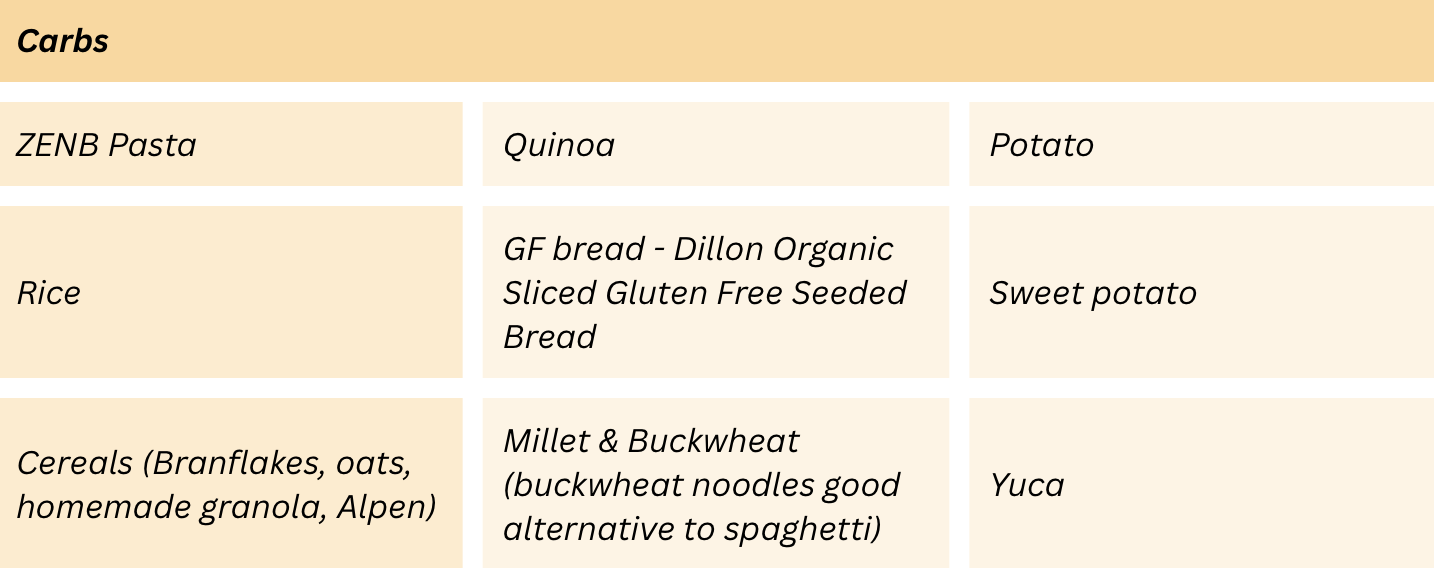

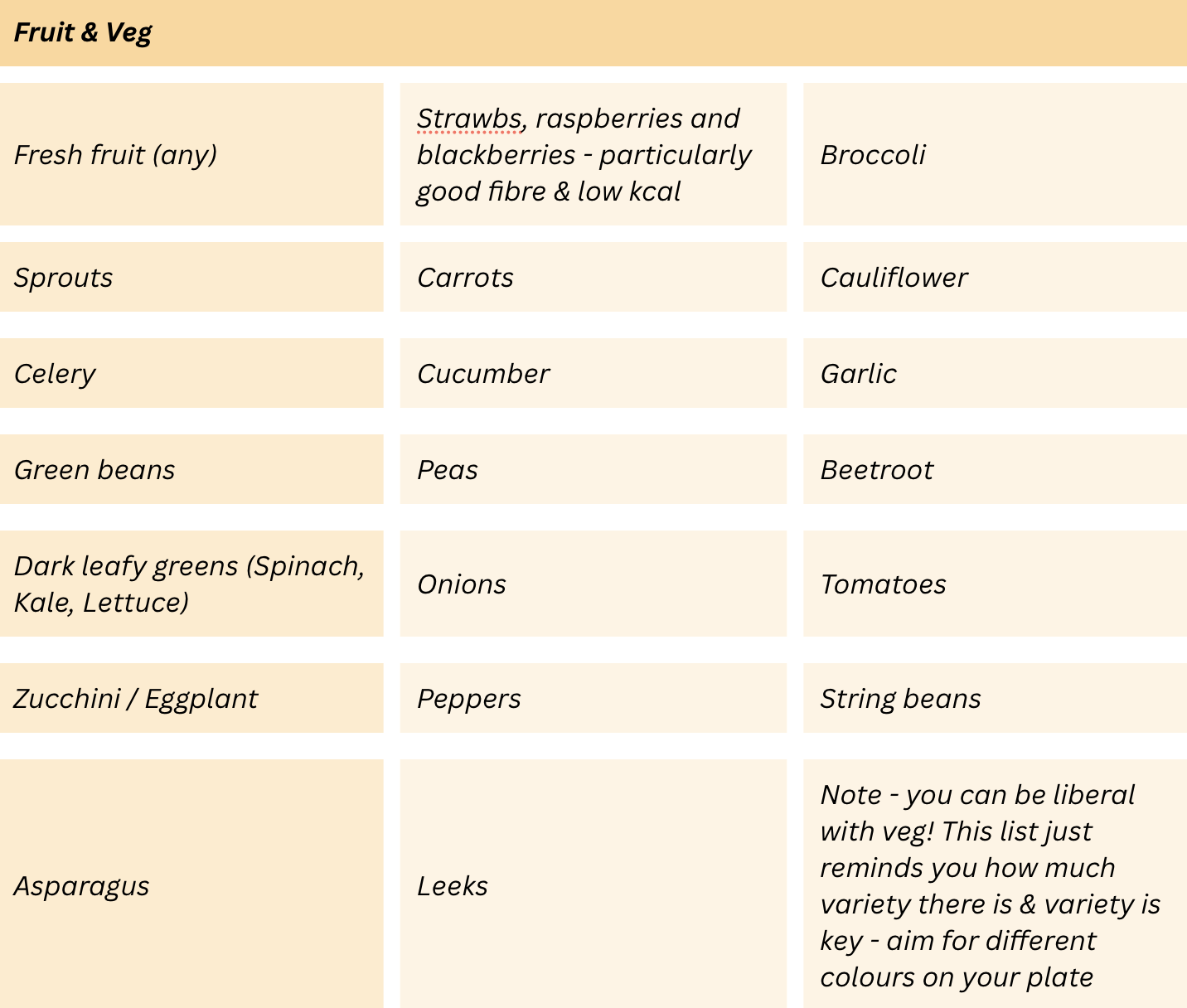
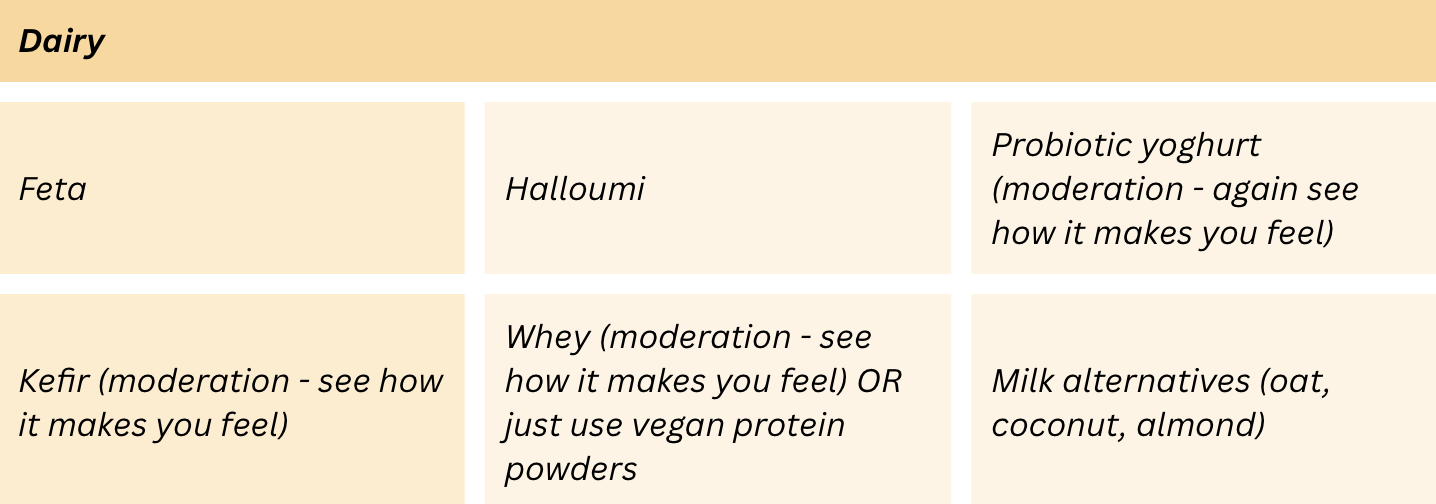


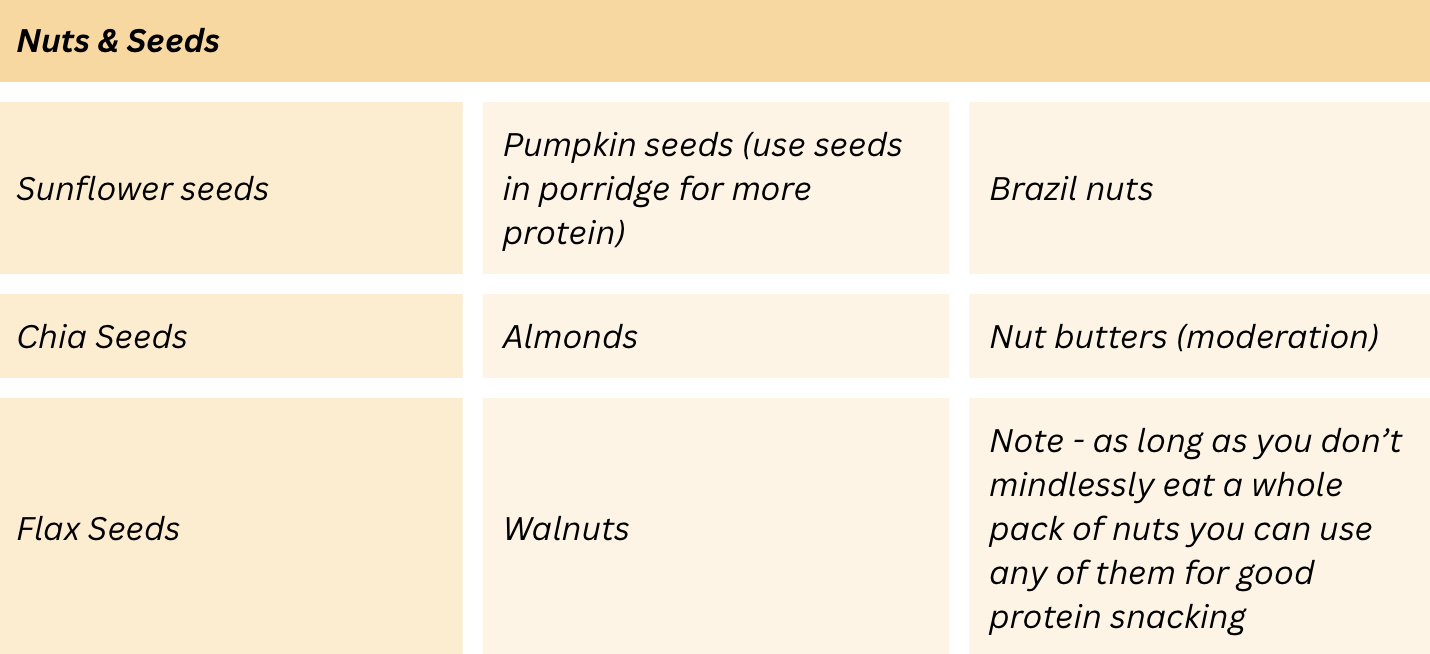
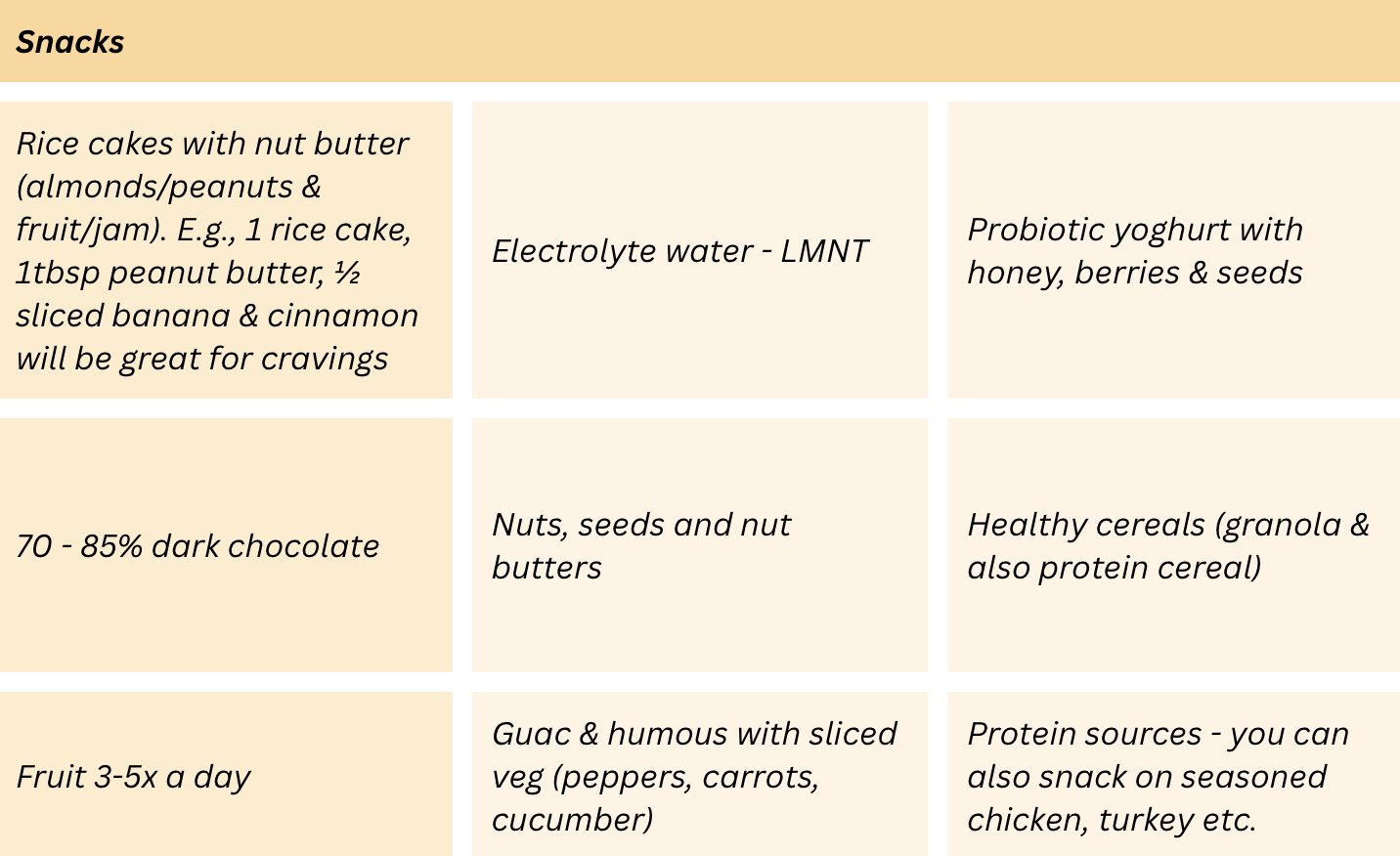


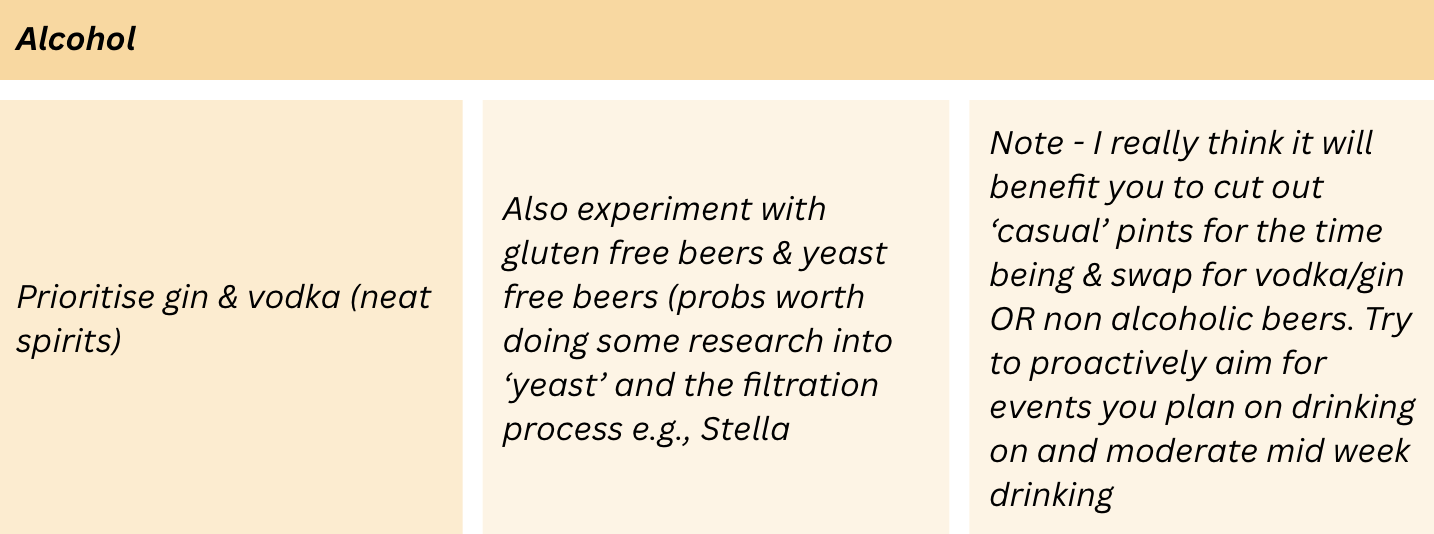
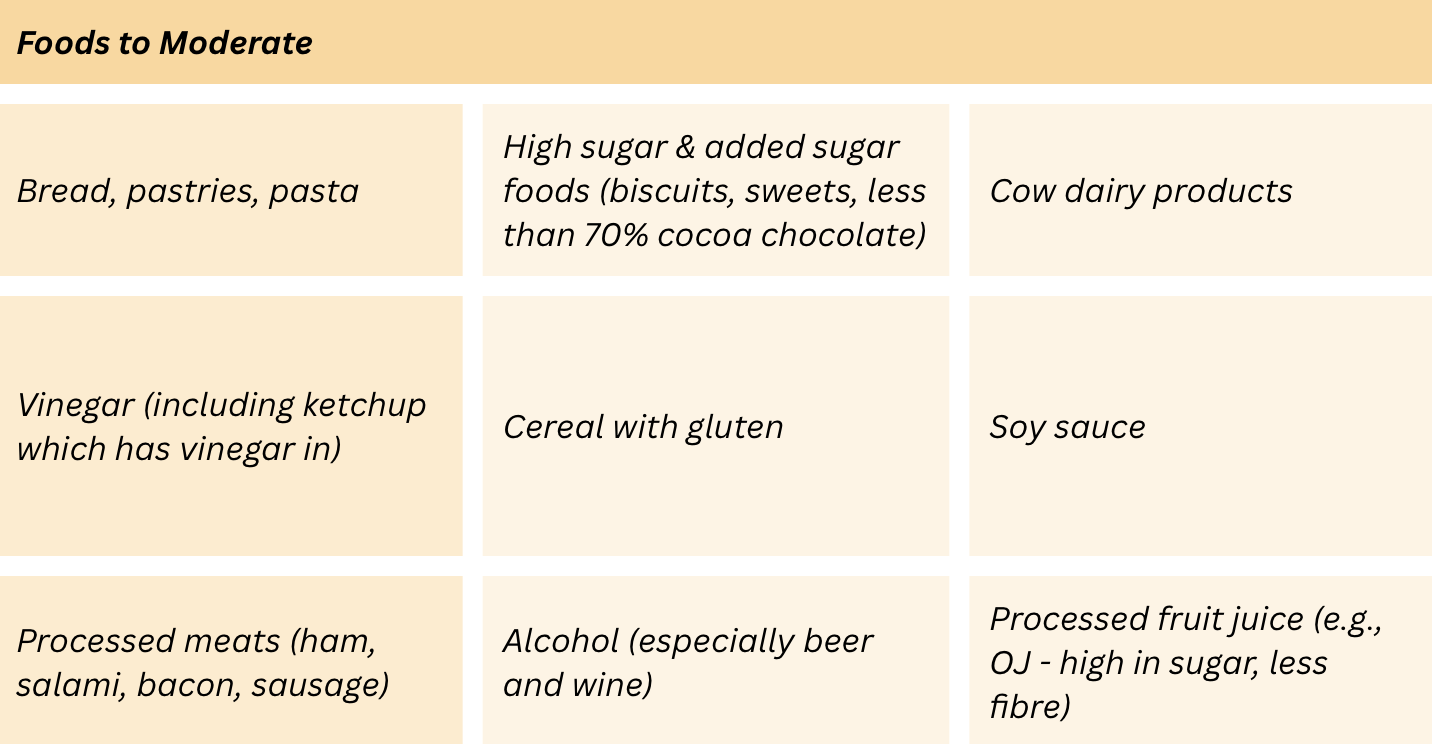
The Discretionary Calorie Allowance
As I mentioned earlier in this post, flexible dieting allows for moderate indulgence so long as 80-90% of your diet comes from whole and minimally refined foods. This approach of focusing predominantly on “nutrient-dense foods combined with a moderate allowance for indulgence foods ensures a healthy diet overall that increases the chances of long-term adherence” (1., p.26). How you choose to consume the 10-20% of your discretionary calorie allowance is up to you, and I’d recommend individualising your hedonic strategy in a way that best serves your needs.
How I Personally Manage My Indulgences
I personally have a bit of a sweet tooth (I blame my Dad) and therefore use dark chocolate (85%) as a tool for satisfying these cravings. Twice a day, I eat two squares of dark chocolate (often after lunch and dinner) which amounts to around 30g of dark chocolate (circa 200 calories). This, alongside a bowl of greek yoghurt with a teaspoon of honey (once a day) satisfies my cravings and helps me adhere to the 80-90% rule. Regarding fast food / takeaways, I try to limit this to once a week, usually in the form of a pizza on either Friday or Saturday (yes I think about pizza a lot). Naturally, there are weeks where I may eat out a couple more times (e.g., holidays or road trips) but these are the exceptions, not the rule. This way, I’m able to enjoy my Friday night pizza without losing sight of my overall goals. This is also a great rule for enjoying a health social life too, so if you know you are going out for dinner with friends on a Friday you can proactively choose to have your indulgence meal then!
Health Currency Challenges (HCCs)
As per, I’ll leave you with a few HCCs to help get you started on designing your own personal food guide!
- If you haven’t already, take a food intolerance test particularly if you suffer from bloating, chronic fatigue, and skin conditions like eczema and acne. YorkTest do a comprehensive food intolerance test you can find here – York Test Food Intolerance.
- Use this template to create your own personal food guide. Once you’ve done this, stick it somewhere visible in the kitchen e.g., on the fridge.
- Allow yourself to have one takeaway / fast food meal once a week, and enjoy it guilt free!
- Start experimenting with different way to control your hedonic intake (e.g., dark chocolate, handful of almonds, rice cakes with peanut butter). Finding that sweet spot (10-20%) is a “powerful tool for long-term adherence to an overall healthy diet” (1., p.270).
References
- Aragon. A (2022). Flexible Dieting: A Science Based, Reality-Tested Method For Achieving & Maintaining Your Optimal Physique, Performance & Health. Victory Belt Publishing INC.


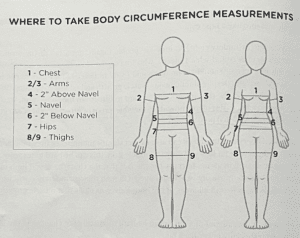






One Response
Really useful and will definitely be trying this out!